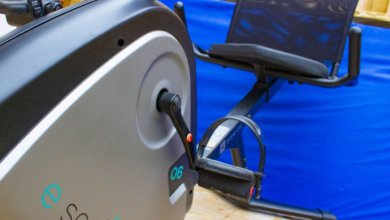How Many Pull Ups Should I Be Able to Do – Whats the Average?

Pull Ups are considered a hallmark of physical fitness, and they are one of the most popular exercises around. Anyone who's ever hit the gym has probably wondered how many pull ups is enough.
Though there is no definitive answer to how many pull ups one should be able to do, general guidelines suggest that men should be able to perform at least 8 reps and women should be able to perform at least 3 reps.
Elite athletes may be able to do significantly more. Beginners on the other hand, may only be able to do a few reps. The takeaway is this. The number of pull ups you can perform is largely dependent on your strength and fitness level.
In this article, we will discuss some tips on how to improve your pull up performance and offer some general guidelines on how many pull ups you should be able to do.
How Many Pull Ups Should I Be Able to Do?
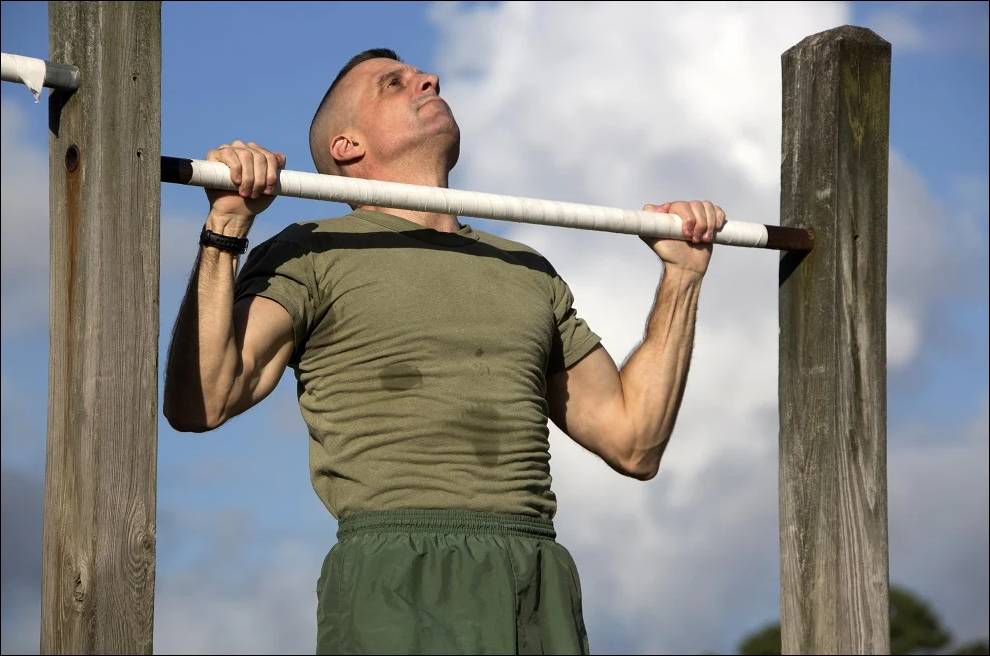
You won't find the exact answer to this question on Quora or Reddit or anywhere else because it depends on your strength and fitness level. However, general guidelines suggest that men should be able to perform at least 8 reps.
The military uses pull ups as a way to measure the upper body strength of recruits. In order to pass the physical fitness test, men between the ages of 17 and 21 must be able to do at least 6-12 reps.
Navy seals are required to do at least 12 clean pull ups with the chin above the bar and the arms fully extended at the bottom.
Elite athletes such as Crossfitters and gymnasts may be able to do significantly more than the average person.
To sum it up, the number of pull ups that a person can do varies extensively and is largely dependent on their strength and fitness level.
How Many Pull Ups Should I Do a Day to See Results?
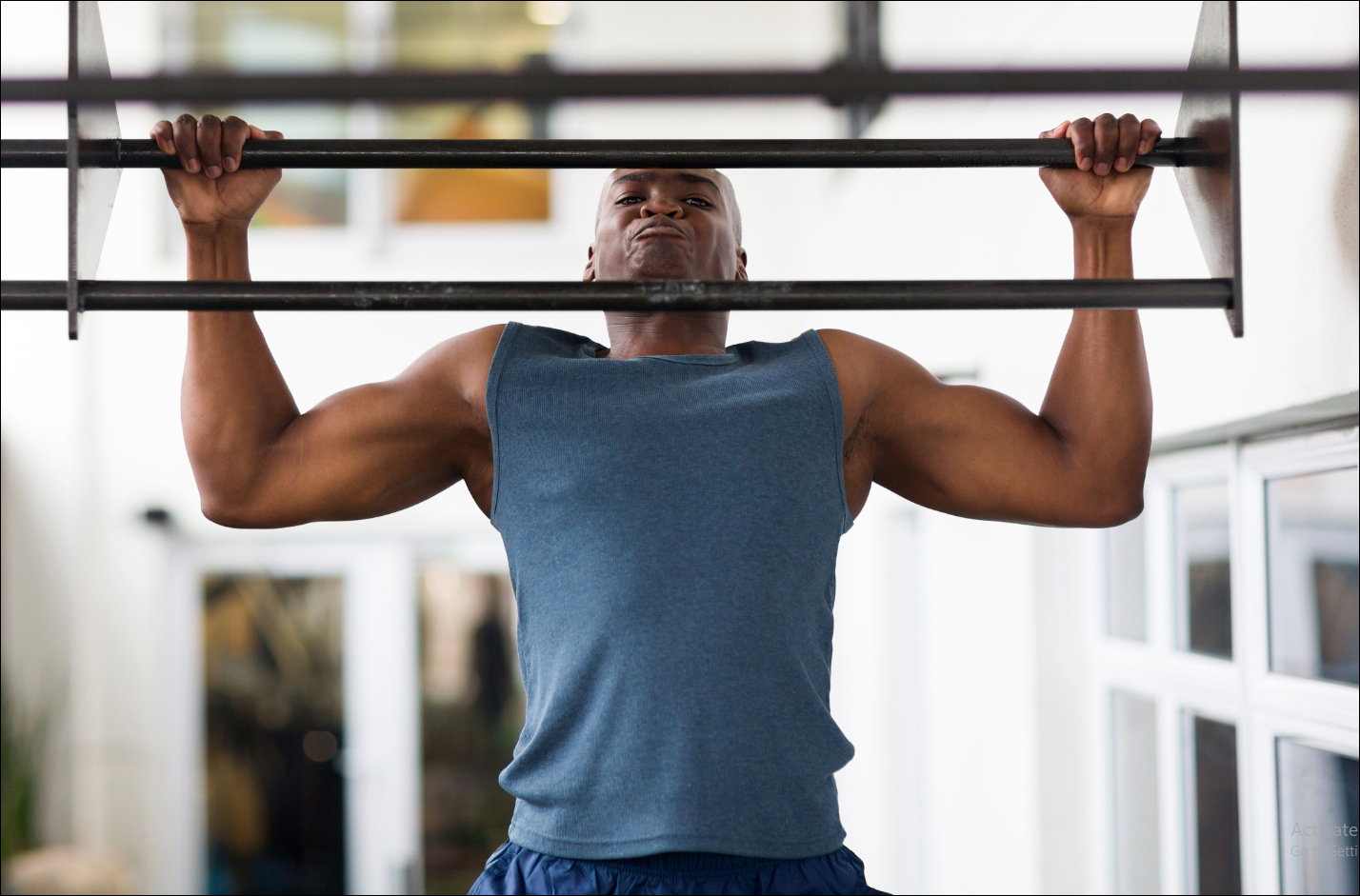
That depends on what defines 'results' for you. People have different reasons to start doing pull ups. Some want to improve their upper body strength, others want to build muscle, and some just want to be able to do more than they could before.
The number of pull ups you do each day will also be influenced by your current strength and fitness level. If you are looking to build muscle, you should be looking to add progressive overload to your workouts.
This means that you should be looking to increase the amount of weight you are lifting, the number of reps you are doing, or the number of sets you are doing.
If you are a beginner, your goal should be to master proper form before adding weight or increasing the number of reps.
Start by doing 1-2 sets of 4-5 reps. Once you can do this consistently, you can start to increase the number of sets and reps you are doing. As long as you are progressing, dont worry about how many pull ups you are doing each day.
How Many Pull Ups a Day Should I Do for Building Massive Arms?

The pull ups are a monster move for the upper body. But they are not our first choice for building big arms. The chin up is a slightly better option because it allows you to keep your palms facing toward you throughout the entire move.
This shifts the emphasis to your biceps, which is what you want if your goal is to build bigger arms.
But even that's not enough.
The triceps make up two-thirds of your upper-arm mass, so you need to do moves that target them directly if you want to see real growth.
Unfortunately, the pull up doesn’t do that.
Luckily, dips work this muscle, and several others, quite effectively. And yes, you can also hit your tris with several other exercises, like triceps pushdowns, overhead dumbbell extensions, and close-grip bench presses.
How Many Should I Do for Abs?

While the pull ups recruit some of the abdominal muscles, they're not the best exercises for developing six-pack abs or even sometimes in a very select few cases, 10 pack abs.
Just like any other body part, you need to target the abs from different angles to see results. The best ab workout routine should include daily sit ups, Pilates exercises, planks, hanging leg raises and captain's chair style exercises.
How Many Pull Ups a Day Are Possible?
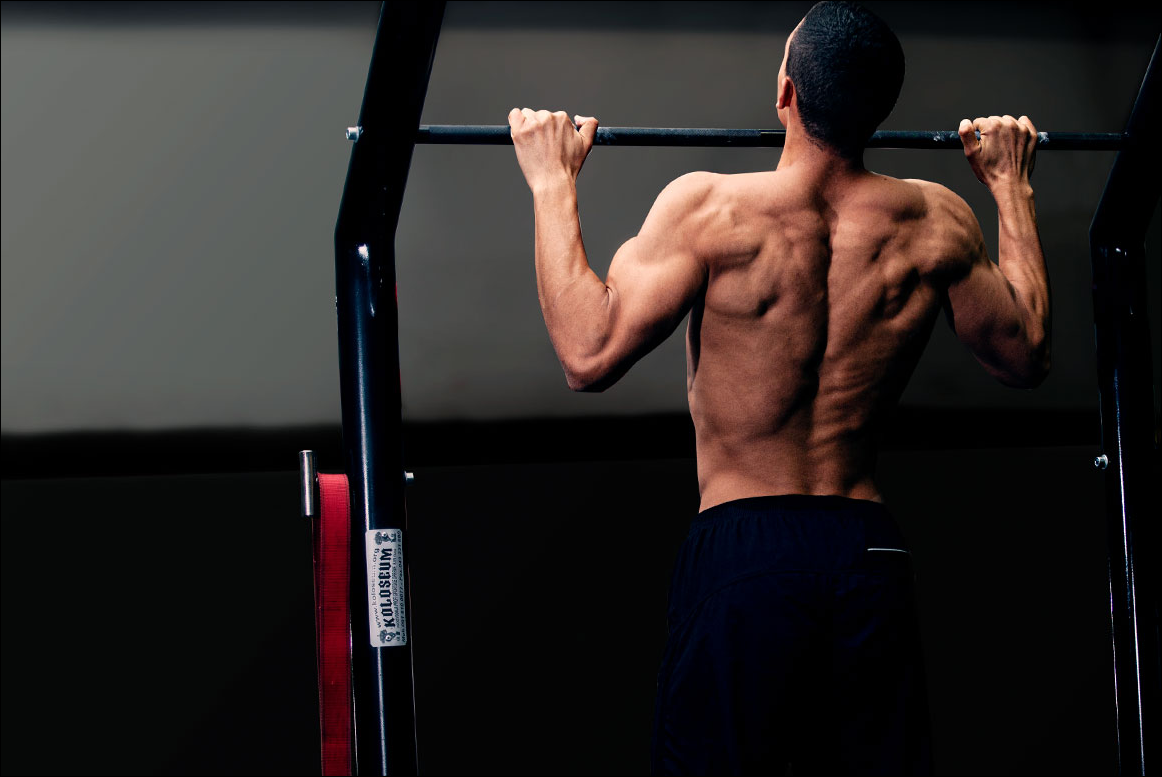
There's no limit to how many pull ups you can do in a day. The only thing that matters is that you're progressing and challenging yourself.
We've seen gymnasts crank out 100 pull ups in a single workout, and there are reports of people doing 200 or more in a day, and then there are the more realistic workouts which is centered around knocking out 50 pulls ups a day.
If I were you and a beginner, I would make it your goal to shoot and aim for 20 pull ups a day. Make that your first milestone.
The world record for the most pull ups in 24 hours is 4321 set by Mark Jordan, a 54-year-old Texan.
The average male should be able to perform 8 strict pull ups, while the average female can do 6.
So, if you're wondering how many pull ups you should be able to do, the answer is as many as you can. Just make sure you're maintaining good form and progressing appropriately.
If you're not able to perform any strict pull ups, start with negatives or use an assisted pull up machine.
Factors on Which No of Pull Ups One Can Do Depends On
There are a multitude of factors that contribute to the number of pull-ups someone can do.
Your Experience
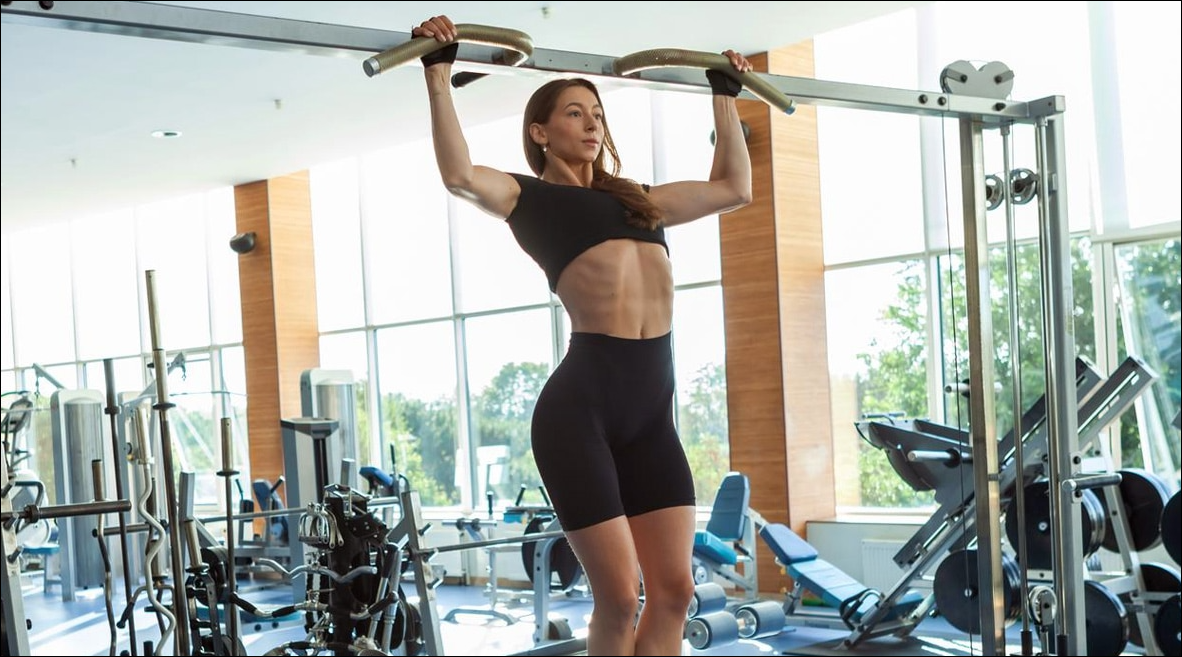
What is your experience with pull-ups? If you are a beginner, expect to be able to do fewer pull-ups than someone who is more experienced. Also I would highly recommend that you start with a easier grip, such as the neutral grip style of pull up.
As you get used to the movement and build up the muscles required, you will gradually be able to increase the number of pull-ups you can do. After you have master the wide grip pull ups, you can move on to Australian style pull ups and even upside down pull ups.
Your Grip Strength
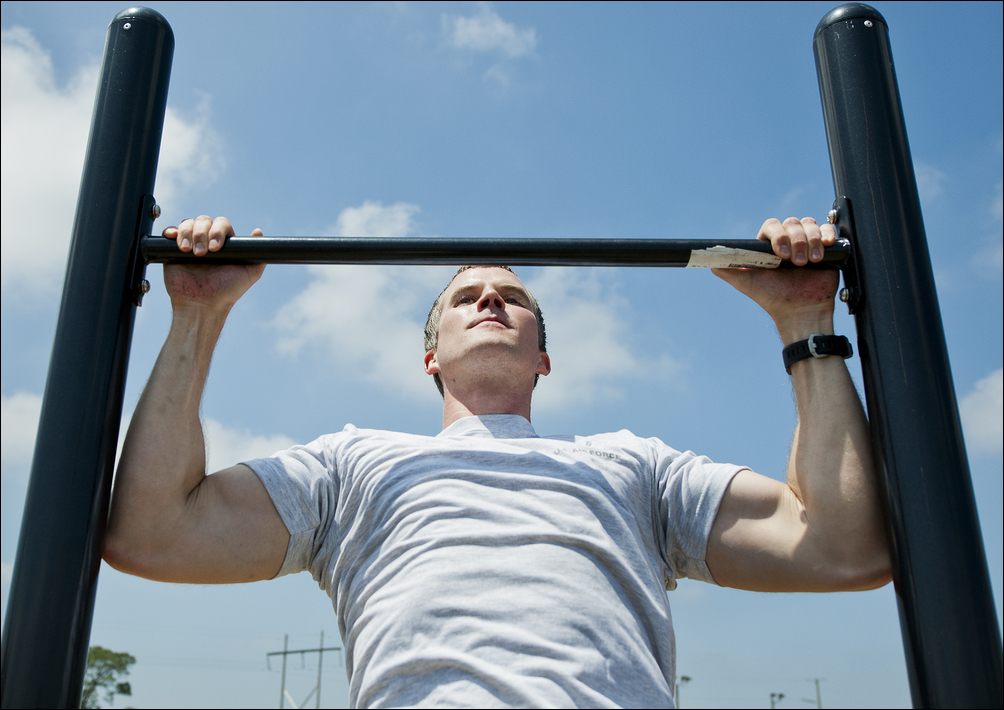
How you grip the bar also affects the number of pull-ups you can do.
If you use a shoulder-width, overhand grip over neutral grip pull up, it will be harder to do pull-ups than if you use a chin-up grip (hands shoulder-width apart, palms facing you).
This is because the chin-up grip puts your biceps in a better position to help lift your body. That segues into the next factor.
Your Body Weight

If you weigh more, it will be harder to do pull-ups. This is why it’s important to focus on your bodyweight relative to your strength when trying to increase the number of pull-ups you can do.
Losing weight will make it easier to do pull-ups and help you progress faster.
Muscle Strength

Pull Ups are a compound exercise which means they work multiple muscle groups. The primary muscles used are the latissimus dorsi (lats), the forearms, biceps, triceps, traps, and pecs.
This synergy of muscle groups is what makes the pull-up so effective. To be able to do more pull-ups, you need to focus on building up the strength, stamina, and endurance of all these muscles. The best way to do this is by using progressive overload.
This means gradually increasing the difficulty of your workouts so that your muscles have to adapt and grow stronger. One way to do this is by using weighted pull-ups, or by wearing a weight vest. Another is to do more reps, or sets of pull-ups.
Your Diet

Your diet is probably the most underrated factor when it comes to increasing muscle strength and size. If you’re not eating enough calories, or the right ratio of macros, you won’t be able to build muscle no matter how hard you train.
To make sure you’re getting enough calories, get healthy foods, a meal replacement, or use a calorie calculator and aim to eat in a calorie surplus.
As for macros, you should be eating a ratio of 50% carbs, 30% protein, and 20% fat. This will give your body the nutrients it needs to build muscle and recover from workouts.
A super easy way to get these macros in is from a meal replacement shake such as kachava. This is the one that I personally use. I get this flavor here. Although there, are other alternatives that are a bit cheaper such as Lyfe Fuel's Essentials Shake.
What Are the Benefits of Performing Pull Ups Everyday
There are numerous benefits of performing pull ups every day. Look at any gymnast, rock climber, or CrossFit athlete and you’ll see someone with an enviable upper body. That’s because pull-ups work almost every muscle in your back and arms.
Doing pull-ups on a regular basis will help to:
Build Strong Muscles

The advantage of performing compound exercises like pull-ups is that they work multiple muscle groups at once. This helps to build strength and size in a more efficient way than isolation exercises like bicep curls.
As well as working your lats, traps, and pecs, pull-ups also help to strengthen your core and improve your posture.
Improve Your Strength

The pull-up is a great measure of strength. If you can do more than 10 pull-ups, you’re officially stronger than 50% of the population.
But even if you can only do a few pull-ups, don’t worry. The key is to consistently add more reps each time you work out.
In fact, research has shown that doing just one extra rep per week can lead to a significant increase in strength over time. As the number of reps you are able to do currently starts to get easier, you should begin to increase the number of repetitions you do each time you work out.
For example, if you can currently do 10 pull-ups, aim for 11 next time. Then 12 the following week, and so on.
Doing this will help ensure that you are continuously challenging your muscles and making gains in strength.
Improve Your Posture
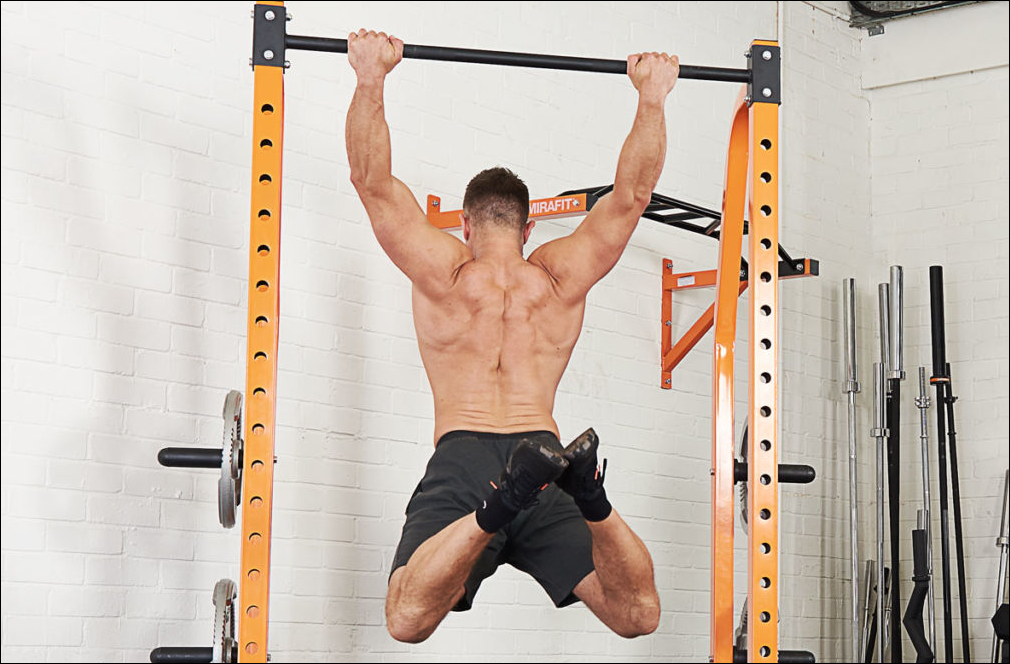
Your posture is vital to your overall health. Poor posture can lead to pain, fatigue, and even injuries.
Pull ups recruit your pull muscles, which are responsible for keeping your shoulders back and your chest up.
This helps to improve your posture by strengthening the muscles that support good posture. Additionally, as you get stronger and are able to do more pull-ups, your body will become more accustomed to holding itself in a good position.
Carryover

Pull ups also have a great carryover to other exercises and sports.
For example, your bench press will improve because doing pull-ups strengthens your lats, which are responsible for stabilizing the weight of the bar or machine on your chest when you perform other exercises such as chest press or bench press.
Similarly, your pulling muscles will also be better equipped to handle other exercises that work them, such as standing or seated rows and lat pulldowns using DIY lat pulldown bar.
Improved Bone Density

Any form of strength training is great for your bones. This is because the resistance from gravity helps to stimulate the growth of new bone cells.
This is especially important as you age since our bones tend to become weaker and more brittle as we get older. Pull ups are an excellent way to help improve your bone density and reduce your risk of developing osteoporosis.
Boost Your Confidence and Mood

There's something about nailing a new personal best or reaching a goal that gives you an incredible sense of achievement.
This feeling of accomplishment can do wonders for your confidence and mood. Furthermore, as your strength and physique improve, you’ll likely find yourself feeling better about yourself in general.
Picture someone who's never been to the gym before. They might be intimidated by all the weights and machines. But after a few weeks of training, they start to see results. They feel stronger, their clothes fit better, and they have more energy.
This newfound confidence can spill over into other areas of their life and make them happier and more positive overall.
The same thing happens when you begin to be able to do more pull-ups. You start to feel better about yourself and your physical abilities. This can lead to increased confidence and a better mood.
Are There Any Drawbacks to Doing Pull Ups?
As long as you are healthy, have no joint pain, and are using proper form, there are no drawbacks to doing pull-ups.
In fact, research has shown that pull-ups can be beneficial for people with shoulder pain. This is likely because pull-ups help to strengthen the muscles around the shoulder joint.
That said, here are some potential drawbacks that you might need to be aware of.
Overtraining

As you look to increase the number of pull-ups you can do, it’s important to be aware of the risk of overtraining.
This is when you train too frequently or too intensely and your body is unable to recover properly. This can lead to injuries, fatigue, and even burnout.
To avoid overtraining, keep from training everyday or even every other day as you get used to training. make sure you allow yourself enough time to rest and recover between workouts. Training 7 days a week can cause overtraining Additionally, consider using a training program that alternates between easy and hard days.
For example, you might do pull-ups every other day. On the days in between, you can focus on other exercises or just take a rest day.
Injury
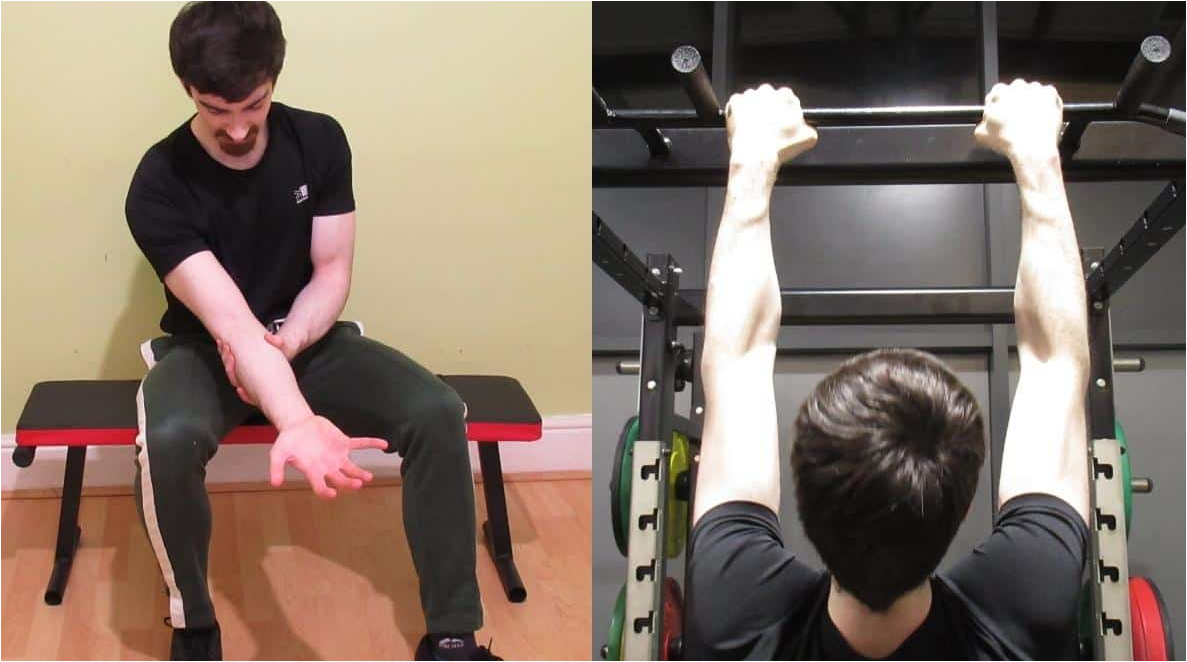
We have seen athletes wildly flaying their arms while hurling themselves over the bar in pursuit of a new personal best. This is not proper form and will likely lead to injury.
When doing pull-ups, it’s important to use strict form. This means keeping your body in a straight line from your head to your toes. No swinging, kipping, or flailing.
Additionally, be sure to warm up properly before your workout. This will help to prevent injuries by loosening your muscles and joints.
FAQs About Doing Pull Ups Everyday
Now we answer a few common questions about pull ups.
Q. Are 10 Pull Ups Good?
A. 10 Pull ups are an excellent starting point. From there, you can work your way up to doing more reps as you get stronger. Please note that some people may be able to start with 20. The number of pull ups you can do is largely individualistic.
Q. How Many Pull Ups Should a 50 Year Old Man Be Able to Do?
A. That depends on the fitness level, mobility, strength, and so on of the 50-year-old man. We have seen young men struggle to do a single clean pull up and 60 year olds crank out 20 in a row.
So, age is generally not the best predictor of how many pull ups someone can do. However, a good goal to aim for would be 10-15 strict form pull ups.
Q. How to Get Better at Pull Ups?
A. If you lack the strength to do a full pull up, start by doing negatives. This is where you jump up to the bar and then slowly lower yourself down. Aim for a 3-5 second count on the way down.
Another great option is to use an assisted pull up machine or resistance bands. These machines can help you to build the strength needed to do a full pull up.
Q. Pull Ups vs Chin Ups, Which Is Better?
A. Both exercises have overlapping benefits with very small differences. Chin ups tend to work the biceps a bit more while pull ups work the lats a bit more.
So, if your goal is to build bigger biceps, chin ups might be the better choice. If your goal is a wide V-shaped back, pull ups are the better choice.
At the end of the day, both exercises are great for overall back and arm development.
Q. Can most people do 10 pull ups
Pulling up is undoubtedly one of the most challenging exercises anyone can do. No, most people can't do ten consecutive pull ups. In fact, only small percentage of people can do that. According to Calisthenics-101, 22% or less people can manage ten or more consecutive pull ups.
Related Readings:
- How Many Sit Ups Should I Do a Day?
- How Many Crunches Should I Do a Day?
- Why Do I Bench More Than I Squat? Is This Bad? How To Fix This
- Standing Oblique Crunches – How to, Benefits, Muscles worked, Alternative Exercises
- Underhand Front Raise – What It Is, How To Do It, Muscles Worked, and More
- Rear Delt Row: How to Do it, Variations, Muscles Worked, Benefits, Alternative Exercises
Resource:
https://www.reddit.com/r/Fitness/comments/2xbixp/how_many_pullups_can_you_do/
https://www.livestrong.com/article/344524-how-many-pull-ups-can-the-average-man-do/
Ben Mayz
Hi there! I'm Ben, main author and chief editor at Fitlifefanatics.com. I have been obsessed with Strength Training and Fitness for 18 years now.
My passion for living a happy fit lifestyle is what made me realize that fitness is what I wanted for my future.
I went on to earn my Masters in Sports Training & Biomechanics.
My passion for Strength training & fitness and my love of helping others is what made me start Fitlifefanatics.
Here, myself, and a team of specialist aim to provide the most accurate, and actionable information possible in hopes to help foster the fitness community forward.
You can learn more about Fitlifefanatics on our About Page









